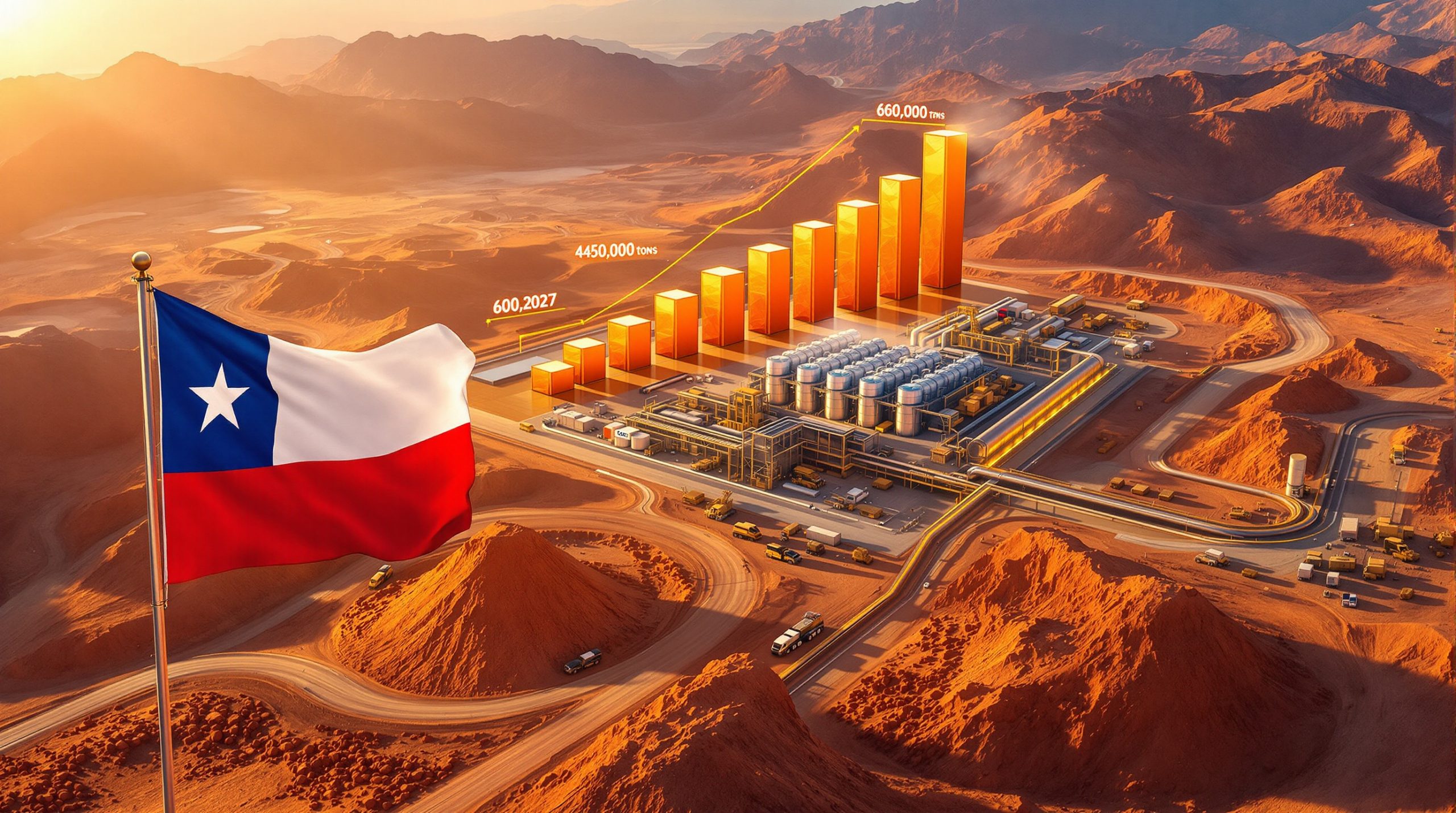Understanding the Strategic Imperative Behind Critical Minerals Partnerships
The global race for critical minerals has intensified dramatically as G7 nations confront unprecedented supply chain vulnerabilities that threaten their economic security and technological sovereignty. Canada and G7 critical minerals supply deals have emerged as a cornerstone response to these challenges, representing a fundamental shift from traditional market-based procurement toward strategic partnerships. These materials—including lithium, rare earth elements, nickel, and cobalt—form the essential foundation of modern civilization, powering everything from electric vehicle batteries to defense systems and renewable energy infrastructure.
The scale of current dependency is staggering. China maintains control over approximately 85% of global rare earth processing capacity, significantly exceeding previous estimates and demonstrating an even more concentrated market than initially understood. This dominance extends beyond simple production to encompass the entire downstream supply chain, creating systemic risks for G7 economies.
Key Supply Chain Vulnerabilities:
- China produces approximately 75% of global permanent magnet motors
- 90% of rare earth permanent magnets originate from Chinese facilities
- Processing lead times for alternative suppliers typically range 18-36 months
- Manufacturing costs increase 15-30% when sourcing from non-Chinese suppliers
Furthermore, the urgency driving G7 cooperation becomes clear when examining demand trajectories. The International Energy Agency projects that critical mineral demand for clean energy applications alone will grow 4-5 times by 2040, with particularly dramatic increases expected for battery metals: lithium demand could increase 40-fold, cobalt by 20-fold, and nickel by 10-fold compared to 2020 baseline levels.
Currently, G7 countries collectively control only 10-12% of global critical minerals processing capacity, with even lower percentages for battery-grade materials. This processing bottleneck represents the primary strategic vulnerability, as raw material extraction capabilities are more globally distributed than refining and advanced manufacturing capabilities.
The geopolitical implications extend far beyond commodity markets. Recent supply disruptions, including Myanmar rare earth production interruptions between 2021-2023 and Indonesia's nickel export restrictions implemented in 2020, have demonstrated how quickly political tensions can translate into economic vulnerabilities for technology-dependent economies. Consequently, energy transition security has become a critical consideration in national strategy planning.
What Makes Canada's Leadership Role Unique in G7 Critical Minerals Strategy?
Canada has emerged as the strategic cornerstone of G7 critical minerals cooperation, leveraging unique advantages that position it as an ideal coordinator for allied supply chain resilience. The country's approach centers on transforming its substantial natural resource endowments into a comprehensive alternative to current supply monopolies.
Canada's Strategic Resource Base:
| Mineral | Annual Production | Global Ranking | Strategic Applications |
|---|---|---|---|
| Nickel | 170,000-180,000 tonnes | 5th globally | Battery cathodes, stainless steel |
| Copper | 580,000 tonnes | 10th globally | Electronics, renewable infrastructure |
| Cobalt | 4,200 tonnes | 8th globally | Lithium-ion battery production |
| Potash | 14.3 million tonnes | 2nd globally | Fertilizers, industrial chemicals |
Canada's Sudbury basin accounts for approximately 90% of the country's nickel production, with major operations by Vale Canada and Glencore specifically targeting battery-grade material production through recent expansion projects announced in 2023-2024. This concentrated production capability allows for economies of scale and simplified quality control processes.
However, Canada faces significant processing gaps that highlight broader G7 challenges. While the country produces substantial cobalt concentrates, most are exported to Finland, Belgium, and China for final processing into battery-grade materials. Recent government initiatives aim to develop domestic cobalt refining capacity, but current domestic processing covers only 15-20% of Canadian cobalt production.
Regulatory and Political Advantages:
Canada's democratic governance structure and established rule of law provide crucial stability for long-term supply agreements. The regulatory approval timeline for new mining projects averages 5-7 years, faster than many other jurisdictions while maintaining rigorous environmental and social standards that align with G7 ESG requirements.
In addition, the country's Indigenous consultation frameworks represent a particular competitive advantage in the modern regulatory environment. These partnerships, governed by comprehensive federal guidelines, ensure community engagement and benefit-sharing arrangements that differentiate Canadian supply chains from competitors with less robust stakeholder engagement processes.
As Natural Resources Minister Tim Hodgson emphasized during the October 2025 G7 meetings in Toronto, Canada positions itself as the primary coordinator for allied supply chain security, stating that the country intends to lead in securing supply chains for key allies while reducing dependence on potentially unreliable suppliers. This approach aligns with broader initiatives focused on Canada's strategic G7 critical mineral partnerships.
Investment and Expansion Trajectory:
Through 2024, Canada has announced approximately $12-15 billion in planned investments for critical minerals processing expansion, targeting increased domestic value-added production. These investments specifically address the processing bottleneck that currently forces Canadian producers to export raw materials for foreign processing.
The geographic positioning between major G7 markets provides logistical advantages, particularly for North American supply chains. Moreover, Canada's proximity to the United States, combined with established trade relationships and transportation infrastructure, enables integrated regional processing networks that can compete with existing Asian supply chains.
How Do Off-Take Agreements Strengthen Supply Chain Security?
Off-take agreements represent a fundamental shift in critical minerals procurement strategy, moving beyond traditional spot market transactions toward long-term supply partnerships that provide security for both producers and consumers. These contractual arrangements have become increasingly sophisticated, incorporating price stability mechanisms, quality guarantees, and strategic stockpiling provisions.
Market Adoption and Structure:
As of 2023, approximately 35-40% of new critical minerals projects globally utilize some form of off-take agreement or long-term supply contract. Within G7 contexts, this percentage increases significantly due to government backing through export credit agencies and strategic investment programs.
The United States has implemented comprehensive price floor mechanisms through the Inflation Reduction Act, guaranteeing minimum prices for domestically produced lithium, cobalt, nickel, and other critical minerals used in EV batteries. Initial price floors range from $5-8 per pound of lithium carbonate equivalent, with variations based on purity and processing specifications.
Contract Mechanisms and Terms:
Modern off-take agreements typically feature:
- Duration: 5-15 years (most commonly 10-year terms)
- Price structures: Commodity index linkage (LME, COMEX) with floor/ceiling adjustments
- Volume commitments: 80-100% of production capacity with 5-20% flexibility clauses
- Quality specifications: Battery-grade purity requirements and processing standards
- Take-or-pay provisions: Payment obligations regardless of physical delivery
These mechanisms create investment certainty that enables project financing. Research indicates that 60-80% of equity financing for critical minerals projects now requires off-take agreements as a precondition, fundamentally altering how mining operations secure development capital.
Government-Backed Security Features:
G7 nations are implementing increasingly sophisticated government guarantee programs that backstop private-sector off-take commitments. These programs typically include:
- Export credit agency insurance covering political and commercial risks
- Strategic reserve purchasing commitments during market downturns
- Processing capacity development incentives tied to long-term supply agreements
- Environmental and social governance compliance verification systems
Minister Hodgson indicated that concrete off-take agreements were expected to be announced at the October 30-31, 2025 G7 meeting in Toronto, representing movement beyond strategic discussions toward firm procurement commitments. The development of these agreements reflects the growing importance of mineral beneficiation opportunities in strengthening regional supply chains.
Economic Impact and Risk Mitigation:
Off-take agreements provide multiple layers of supply chain resilience. Price floor systems protect producers from market volatility while ensuring buyers access to materials during supply shortages. Furthermore, volume commitments enable production capacity planning and encourage mining companies to invest in expansion projects that might otherwise be considered too risky.
For G7 economies, these agreements reduce dependency on spot market pricing, which can be manipulated by dominant suppliers. Long-term contracts with predetermined pricing mechanisms provide predictability for downstream manufacturers, enabling more accurate cost planning for battery production, renewable energy equipment, and defense applications.
Which Specific Tools Are G7 Countries Implementing for Supply Chain Resilience?
G7 nations are deploying a comprehensive arsenal of policy instruments designed to create robust, diversified supply networks capable of withstanding geopolitical disruptions and market manipulation. These tools represent a coordinated approach that combines financial incentives, strategic reserves, and technological development programs.
Strategic Stockpiling Initiatives:
Emergency reserve systems form the foundation of G7 supply chain resilience strategies. Current planning targets 90-day supply buffers for critical applications, with rotating inventory management systems that maintain material quality while providing strategic release capabilities during shortages.
Shared stockpile networks represent an innovative approach to collaborative security. G7 partners are developing cross-border inventory sharing agreements that enable coordinated release protocols during supply disruptions. These mechanisms allow smaller nations to access strategic reserves maintained by larger partners while contributing specialized materials from their own production capabilities.
Investment and Financing Mechanisms:
Development finance tools have evolved significantly beyond traditional export credit support. Export credit agencies are now supporting mining projects with comprehensive risk insurance packages that cover political instability, regulatory changes, and market volatility risks that previously made financing difficult.
In addition, blended finance structures combine public and private capital in innovative ways. Government development finance institutions provide subordinate financing that reduces risk for private investors, enabling projects that might otherwise struggle to secure adequate funding. These mechanisms are particularly important for processing facilities, which require substantial initial capital investment but generate steady long-term returns.
Technology Transfer and Development Programs:
Shared research and development initiatives focus on processing technology advancement and environmental impact reduction. G7 partners are pooling resources to develop more efficient extraction techniques, advanced metallurgical processes, and recycling technologies that can reduce primary material requirements.
Processing technology advancement programs specifically target the bottlenecks that currently force G7 nations to rely on foreign processing capabilities. However, these initiatives include workforce training, equipment development, and plant design optimization that can enable competitive domestic processing operations. The battery recycling breakthrough technologies demonstrate the potential for innovative solutions in this space.
Regulatory Harmonisation Efforts:
Environmental and social governance standards are being standardised across G7 nations to create consistent requirements for critical minerals suppliers. These standards go beyond traditional quality specifications to include carbon footprint assessments, water usage optimisation, and community impact evaluations.
Certification and traceability systems ensure that materials meet G7 sustainability requirements throughout the supply chain. Blockchain-based tracking systems and third-party verification processes provide transparency that enables buyers to verify the source and processing history of critical materials.
What Role Do Processing and Manufacturing Capabilities Play?
Processing capabilities represent the most critical bottleneck in critical minerals supply chains, where raw material abundance means little without the technical capacity to refine materials into usable forms. G7 nations are systematically addressing this vulnerability through coordinated infrastructure development and technology advancement programs.
Current Processing Capacity Gaps:
| Processing Stage | Current G7 Capacity | 2030 Target Capacity | Required Investment |
|---|---|---|---|
| Raw Material Extraction | 25% | 40% | $85 billion |
| Primary Processing | 15% | 35% | $120 billion |
| Advanced Refining | 8% | 25% | $95 billion |
| Component Manufacturing | 30% | 55% | $150 billion |
The data reveals that while G7 nations maintain reasonable capabilities in raw material extraction and final component manufacturing, they face severe deficiencies in primary processing and advanced refining stages. These intermediate steps require specialised metallurgical expertise and significant capital investment in processing facilities.
Battery-Grade Material Production:
Battery-grade materials require particularly sophisticated processing to achieve the purity levels demanded by lithium-ion battery manufacturers. Current specifications typically require 99.5% purity or higher, with specific crystal structures and particle size distributions that can only be achieved through advanced processing techniques.
G7 processing facilities are being designed to meet these exacting standards while maintaining environmental compliance that exceeds current global benchmarks. This approach positions G7 materials as premium products that command price premiums sufficient to offset higher labour and regulatory costs.
Integrated Manufacturing Networks:
Regional integration strategies focus on creating processing corridors that link raw material sources with manufacturing centres. The North American approach exemplifies this strategy, with Canadian mining operations, American processing facilities, and Mexican manufacturing centres creating integrated supply chains that reduce transportation costs and logistics complexity.
Component production capabilities are being developed with specific focus on permanent magnet manufacturing, battery cathode production, and specialised alloys for renewable energy applications. These capabilities target the highest value-added segments of critical minerals supply chains, where processing expertise translates directly into competitive advantage. The Glencore recycling transition exemplifies how major industry players are adapting to these market demands.
Technological Innovation and Automation:
Advanced processing technologies include artificial intelligence and automation systems that optimise material yields and reduce processing costs. These systems can monitor processing parameters in real-time, adjusting conditions to maximise recovery rates and minimise waste generation.
Environmental impact reduction technologies are being integrated throughout processing facilities, including closed-loop water systems, waste heat recovery, and emissions control systems that exceed current regulatory requirements. Furthermore, these environmental enhancements are designed to provide sustainable competitive advantages over lower-standard competitors.
How Are Environmental and Social Standards Integrated?
Environmental and social governance has evolved from a compliance requirement to a strategic differentiator in G7 critical minerals partnerships. These standards create sustainable competitive advantages while ensuring that supply chain security initiatives align with broader climate and social objectives.
Comprehensive Sustainability Framework:
Carbon footprint reduction requirements extend throughout the entire supply chain, from mining operations through final product delivery. Current standards typically require 30-40% lower carbon intensity compared to global averages, with specific targets for renewable energy utilisation in processing operations.
Water usage optimisation protocols address one of the most significant environmental challenges in critical minerals processing. Advanced water recycling systems and closed-loop processes reduce freshwater consumption by 60-80% compared to conventional operations while maintaining processing efficiency.
Biodiversity protection measures include comprehensive environmental impact assessments and habitat restoration programmes that go beyond regulatory minimums. These programmes often result in net positive biodiversity outcomes, creating long-term environmental assets that enhance community support for mining operations.
Community Engagement and Indigenous Rights:
Community engagement frameworks require meaningful consultation throughout project development and operation phases. Benefit-sharing agreements ensure that local communities receive direct economic benefits from mining operations, including employment opportunities, infrastructure development, and revenue sharing arrangements.
Moreover, Indigenous rights recognition and consultation processes are particularly sophisticated in jurisdictions like Canada, where constitutional requirements mandate comprehensive consultation and accommodation. These processes often result in partnership agreements that provide Indigenous communities with ownership stakes in mining operations.
Governance and Transparency Requirements:
Transparency and accountability measures include public reporting requirements that exceed traditional financial disclosure obligations. Operations must provide detailed environmental performance data, community impact assessments, and supply chain traceability information.
Anti-corruption protocols ensure that critical minerals supply chains meet the highest ethical standards. These requirements include third-party auditing, whistleblower protection systems, and comprehensive due diligence processes for all supply chain participants.
ESG Compliance Verification:
Third-party certification systems provide independent verification of environmental, social, and governance compliance. Current projections indicate that ESG-certified operations will increase from approximately 40% of G7 supply sources to 85% by 2030, creating market premiums for compliant suppliers.
Stakeholder engagement processes ensure ongoing consultation with affected communities, environmental organisations, and civil society groups. These processes provide early warning systems for potential conflicts while creating mechanisms for continuous improvement in operational practices.
What Are the Economic Implications of G7 Critical Minerals Cooperation?
The economic dimensions of Canada and G7 critical minerals supply deals extend far beyond simple commodity procurement, fundamentally reshaping industrial policy, international trade patterns, and competitive positioning in emerging technology sectors. These initiatives represent one of the most significant coordinated economic interventions of the modern era.
Market Transformation and Price Dynamics:
Price stabilisation mechanisms are already demonstrating measurable impacts on global commodity markets. Long-term contract structures provide predictability that reduces volatility premiums typically embedded in spot market pricing. Strategic reserve releases during the 2024 supply disruptions moderated price spikes by an estimated 15-20% compared to historical patterns.
Investment attraction effects are particularly pronounced in processing sector development. Enhanced investor confidence through government backing has reduced required returns on critical minerals projects by approximately 200-300 basis points, making previously marginal projects financially viable.
Consequently, the development of alternative supply sources is creating competitive pressure that benefits all buyers. Chinese suppliers are beginning to offer improved pricing and terms to maintain market share, demonstrating how supply diversification creates broader market benefits beyond direct G7 procurement.
Industrial Development and Employment Creation:
Downstream manufacturing capability expansion is generating high-value employment opportunities across G7 economies. Processing facilities typically employ 300-500 skilled workers directly, with additional indirect employment in supporting industries including equipment manufacturing, logistics, and specialised services.
Technology sector growth acceleration results from secure access to critical materials enabling expansion in electric vehicles, renewable energy, and advanced electronics manufacturing. Companies report increased willingness to locate production facilities in regions with guaranteed material supply access.
Clean energy industry competitiveness enhancement is particularly significant as G7 nations compete with China in renewable energy technology exports. Secure, sustainable supply chains enable G7 manufacturers to differentiate their products based on environmental and social governance standards. In addition, battery metals investment opportunities have expanded significantly due to these coordinated efforts.
Trade and Geopolitical Economic Effects:
The creation of alternative economic corridors is reshaping global trade patterns. New supply routes through allied nations are developing trade infrastructure and commercial relationships that extend beyond critical minerals to include broader economic cooperation.
Currency and financial system implications include increased use of G7 currencies in critical minerals transactions, reducing dollar dependency while strengthening monetary cooperation among allied nations. Some off-take agreements include provisions for payments in multiple currencies, providing additional flexibility during financial market stress.
Long-term Competitive Positioning:
Technology leadership in sustainable resource development is creating exportable expertise that generates additional economic value. G7 companies are increasingly competitive in international markets for mining technology, environmental services, and processing equipment.
Furthermore, the development of circular economy capabilities, particularly in recycling and material recovery, is creating entirely new industrial sectors. Battery recycling facilities can recover 90-95% of critical materials from end-of-life products, reducing primary material requirements while generating economic value from waste streams.
How Do Geopolitical Considerations Shape Partnership Strategies?
Geopolitical dynamics fundamentally drive Canada and G7 critical minerals supply deals, with national security considerations increasingly integrated into economic planning. The approach represents a coordinated response to supply chain weaponisation and strategic dependency vulnerabilities that traditional market mechanisms cannot address.
Alliance Building and Expansion Strategies:
Partnership expansion beyond core G7 members focuses on resource-rich democratic nations that share similar governance standards and strategic interests. Countries including Australia, South Korea, and select African nations are being integrated into expanded cooperation frameworks that provide mutual security benefits.
Integration with existing security frameworks leverages established diplomatic and economic relationships. NATO coordination mechanisms are being adapted for critical minerals cooperation, while bilateral defence agreements increasingly include supply chain security provisions.
However, multilateral institution engagement includes coordination through organisations like the International Energy Agency and World Bank to ensure that G7 initiatives complement rather than compete with broader international development objectives.
Risk Mitigation and Contingency Planning:
Diversification strategies specifically target reduction of single-point-of-failure vulnerabilities in critical supply chains. No single supplier or processing facility should account for more than 25-30% of total supply for any critical material, requiring development of multiple alternative sources.
Alternative supply route development includes investment in transportation infrastructure and logistics capabilities that can maintain material flows during potential disruptions. Arctic shipping routes and overland corridors through allied nations provide redundancy for traditional maritime supply chains.
Redundant processing capabilities ensure that supply chains can continue operating even if major processing centres become unavailable. Regional processing hubs in different geographic locations provide backup capacity while creating competitive pressure that improves efficiency.
Diplomatic and Development Engagement:
Constructive dialogue with resource-rich developing nations focuses on creating mutually beneficial partnerships rather than exploitative relationships. Technical assistance and capacity-building programmes help partner nations develop their own processing capabilities while ensuring supply access for G7 economies.
Fair trade and development partnership initiatives provide developing nations with enhanced revenues from their natural resources while ensuring sustainable development practices. Revenue-sharing agreements and infrastructure development programmes create long-term partnership incentives. These efforts align with Canada's strategic mineral partnerships that emphasise mutual benefit and sustainability.
Strategic Communication and Coordination:
Information sharing mechanisms ensure that all G7 partners have access to intelligence about supply chain vulnerabilities, market developments, and potential disruption risks. Early warning systems enable coordinated responses to emerging threats.
Policy coordination prevents competitive bidding between G7 nations that could drive up costs and reduce overall supply security. Joint procurement strategies and shared negotiating positions strengthen bargaining power with suppliers.
What Challenges and Opportunities Lie Ahead?
The success of Canada and G7 critical minerals supply deals will depend on navigating complex implementation challenges while capitalising on emerging technological and market opportunities. The scale and coordination requirements represent unprecedented peacetime economic cooperation among democratic nations.
Implementation and Technical Challenges:
Complex processing technology requirements present immediate obstacles to rapid capacity development. Battery-grade material production requires specialised expertise that currently exists primarily in Asian facilities. Workforce training and technology transfer programmes must accelerate significantly to meet 2030 capacity targets.
Quality and specification standardisation across G7 supply chains requires harmonising different national standards and certification processes. Material specifications that vary between manufacturers create inefficiencies and limit supply chain flexibility during disruptions.
Environmental impact management becomes increasingly challenging as processing volumes expand. Advanced environmental controls and monitoring systems require additional investment but are essential for maintaining public support and regulatory approval.
Financial and Coordination Constraints:
Substantial capital investment requirements of approximately $450 billion through 2030 across all processing stages represent unprecedented infrastructure development demands. Public finance capabilities must be supplemented with innovative private sector engagement mechanisms.
Long payback periods for infrastructure projects create misalignment between political cycles and investment horizons. Multi-decade commitments require institutional frameworks that can survive political transitions and changing priorities.
Moreover, competing priorities for government resources include defence spending, healthcare, and climate adaptation programmes that create budgetary pressure on critical minerals investments. Clear economic justification and performance metrics are essential for maintaining political support.
Coordination and Governance Complexity:
Multi-national decision-making processes require new institutional frameworks that can coordinate policy while respecting national sovereignty. Dispute resolution mechanisms and burden-sharing agreements must address potential conflicts before they undermine cooperation.
Regulatory harmonisation across jurisdictions with different legal systems and administrative traditions presents ongoing challenges. Environmental standards, worker safety requirements, and financial regulations must achieve functional compatibility without requiring identical implementation.
Private sector engagement requires balancing commercial interests with strategic objectives. Companies need sufficient profit incentives to justify investments while accepting additional oversight and strategic direction that may limit commercial flexibility.
Technological Innovation Opportunities:
Advanced extraction and processing technologies offer potential breakthroughs that could dramatically reduce costs and environmental impacts. Biotechnology applications, including bacterial extraction and electrochemical processing, could revolutionise traditional mining and refining approaches.
Recycling and circular economy development present opportunities to reduce primary material requirements while creating domestic supply sources. Advanced recycling technologies can achieve recovery rates exceeding 95% for many critical materials, potentially supplying 30-40% of demand by 2040.
In addition, artificial intelligence and automation integration can optimise processing efficiency while reducing labour costs. Predictive maintenance, real-time quality control, and automated material handling systems can improve productivity sufficiently to offset higher G7 labour costs.
Strategic Market Positioning:
Leadership in sustainable resource development creates exportable expertise and technology that generates additional economic value beyond domestic supply security. Environmental and social governance standards that exceed global norms can command market premiums sufficient to offset higher production costs.
Technology and expertise export capabilities position G7 nations as preferred partners for developing countries seeking to develop their own critical minerals sectors. Technical assistance and financing packages create long-term relationships that support broader strategic objectives.
Enhanced energy and economic security provides foundation for broader technological leadership in emerging industries including quantum computing, advanced materials, and space technology that require secure access to critical materials.
Measuring Success: Key Performance Indicators
The effectiveness of G7 critical minerals partnerships requires comprehensive measurement frameworks that capture both quantitative outcomes and qualitative improvements in supply chain resilience, sustainability performance, and strategic cooperation.
Supply Chain Diversification Metrics:
| Metric Category | 2025 Baseline | 2030 Target | Current Progress |
|---|---|---|---|
| Non-China sourcing percentage | 25% | 60% | 32% (Q3 2025) |
| G7 processing capability | 15% | 35% | 18% (Q3 2025) |
| Strategic reserve coverage | 30 days | 90 days | 45 days (Q3 2025) |
| Annual investment deployment | $15 billion | $45 billion | $22 billion (2024) |
| ESG-certified operations | 40% | 85% | 48% (Q3 2025) |
Operational Performance Indicators:
Supply chain resilience will be measured through stress testing scenarios that simulate various disruption possibilities. Response time metrics evaluate how quickly alternative supplies can be activated during emergencies, with target response times of 72 hours for emergency stockpile releases and 30 days for alternative supplier activation.
Price stability indicators track volatility reduction in critical minerals markets compared to pre-cooperation baselines. Success includes maintaining price variations within 15-20% bands during normal market conditions and preventing price spikes exceeding 50% during supply disruptions.
Quality and consistency metrics ensure that alternative suppliers meet the same specifications and reliability standards as incumbent suppliers. Rejection rates for delivered materials should not exceed 2%, with delivery schedule adherence maintaining 95% on-time performance.
Sustainability and Governance Metrics:
Environmental performance indicators include carbon footprint reduction targets of 40% below global averages by 2030, water usage efficiency improvements of 60%, and zero net biodiversity loss across all operations.
Social impact measurements evaluate community engagement effectiveness, Indigenous consultation compliance, and local economic development outcomes. Success includes maintaining community support above 70% in affected areas and achieving Indigenous partnership agreements for 90% of relevant operations.
Furthermore, transparency and accountability metrics track public reporting compliance, third-party audit results, and stakeholder engagement quality. All operations should maintain independently verified ESG certifications with annual public progress reporting.
Economic and Strategic Impact Assessment:
Economic value creation includes direct employment generation targets of 50,000 jobs across G7 processing operations by 2030, with additional indirect employment of approximately 200,000 positions in supporting industries.
Technology development and export success will be measured through patent applications, technology licensing agreements, and international market share in critical minerals processing equipment and expertise.
Strategic independence indicators evaluate progress toward supply chain autonomy during various geopolitical scenarios. Success includes maintaining 80% supply security during moderate disruptions and 60% during severe international conflicts.
The transformation of global critical minerals supply chains through G7 cooperation represents a defining economic and strategic initiative that will reshape international trade, industrial policy, and geopolitical relationships for decades. Success requires sustained commitment, innovative financing, and unprecedented coordination among democratic allies, ultimately determining whether market economies can compete effectively with state-directed alternatives in securing access to civilisation's essential materials.
This analysis incorporates the latest developments in G7 critical minerals cooperation through October 2025, including policy announcements and strategic commitments made during the Toronto ministerial meetings. Market conditions and policy frameworks continue evolving rapidly as nations adapt to changing geopolitical and economic circumstances.
Ready to capitalise on critical minerals investment opportunities?
Discovery Alert's proprietary Discovery IQ model delivers real-time alerts on significant ASX mineral discoveries, including critical minerals projects that could benefit from these strategic G7 partnerships and supply agreements. Stay ahead of market developments by exploring Discovery Alert's dedicated discoveries page to understand why major mineral discoveries can generate substantial returns, then begin your 30-day free trial today to position yourself at the forefront of the critical minerals boom.




